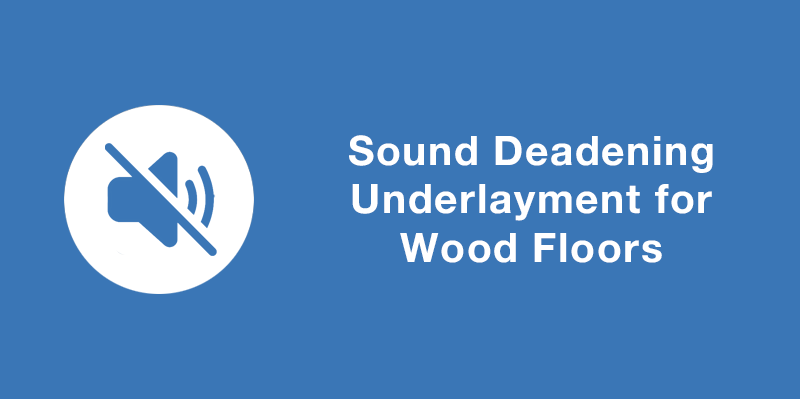Sound Deadening Underlayment for Wood Floors

There it was Labor Day weekend 2018 and I laid awake at 3 a.m. exhausted and awake in my friend’s downstairs apartment unit. I was visiting a friend in Chicago for the long last holiday weekend of the summer as I was helping her adjust in her new living space there. Of course, as we have all done at some point in time, I crashed on the couch for the weekend for my make-shift bed. I suppose some of my lack of rest was being on the rickety couch at 3 a.m. but what really had me stirring was the baby crying in the unit above. Rushing parental footsteps to the nursery and the sound of the chair rocking back and forth that seemed to last over an hour. I could hear voices but could not make out the conversation. As much as I tried to ignore it, the more in tuned to the upstairs activity I became, leaving the long fun visiting weekend without much quality rest.
The apartment building was older, no doubt, but it is because of those old buildings and their lack of sound control emphasis in the 1950’-1960’s that developed more mainstream standards for sound deadening for wood floors in multi-family structures today. There was not much structural insulation between the ceiling in my living room unit where I was resting to the floor of the nursery above. A sound deadening underlayment for the wood floors above would have definitely helped the pitfalls of the older construction home.
Sound Suppression
There are two main class types of sound that are primarily considered and tested for in today’s residential market. Impact Isolation Class (IIC) and Sound Transmission Class(STC). IIC measures noise created by collisions with the floor, such as walking, jumping, etc. STC measures ambient airborne sounds, such as talking, electronics, etc. When installing new wood or hard surfaced flooring, investing in quality acoustical grade underlayment will help against unwanted noise from levels above and below. Underlayments like QuietWalk Plus help with the sound deadening for wood floors. The higher the test number for either class of sound, the more the underlayment and structure contributes to overall noise reduction to the floor. QuietWalk Plus has some of the better industry tested sound numbers with an IIC 71 and STC 66. In many cases when comparing underlayments side-by-side, a 2-point increase in the sound numbers can be quite a lot in translation of how much sound has traveled to the room below.
Density
There are many underlayments on the market that tout acoustical suppression. Materials the underlayment is made from is an important consideration. Moreover, the thickness and density of that underlayment composition can be a determining factor of sound abatement of a good underlayment as well. In order to understand both and how they correlate together, it’s worth defining each. Density is the amount of material “stuffed” into a given thickness. Density is measured in pounds per cubic foot. It measures the relationship between weight and volume of an item. The denser the underlayment, the more supportive it is to the joints of the wood and laminate floor planks and better it will be at controlling sound from traveling to other rooms, especially below.
There are a variety of acclaimed sound dampening compositions on the underlayment market, many rely on the heavily built up structure of the floor-to-ceiling assembly to improve sound numbers. Polyfoams and other crosslink blends of polyfoams are quite popular for economics and do help to contribute some noise reduction but do a basic to marginal job for noise reduction at best by themselves. Many of these foam based underlayments are under 3 mm thickness with a density equal to or less than 5lbs per cubic foot. Compare that to the density of a different composition made from recycled fibers in QuietWalk Plus at 11.52lbs per cubic foot – double that of top end foams – and it becomes apparent that the product material has a lot to do how it controls and dampens sound in wood floors. Choosing dense, supportive underlayments will deaden sound from traveling to other rooms and help the wood floor perform better.
Conclusion
Hearing your neighbors at 3 a.m. in the morning is not a desirable trait to multi-family residential living but having beautiful refinished wood floors in the unit can be. Ensuring that having a quality sound deadening underlayment for wood floors is the difference of good neighbors and unrestful night’s sleep.
[thrive_leads id=’1926′]
Join Our Newsletter
You are about to install your new flooring. As you lay the first plank you realize that
